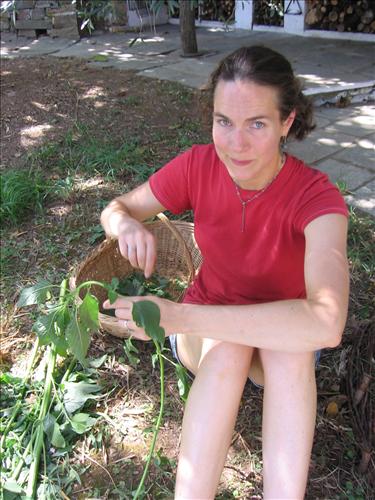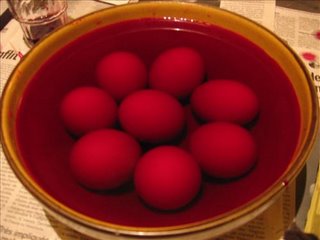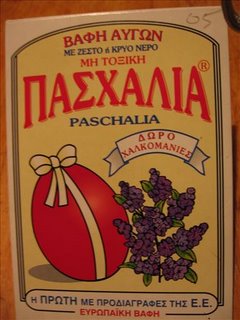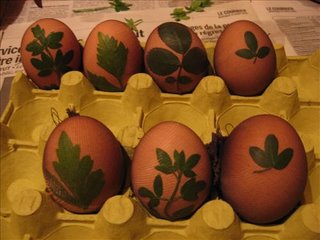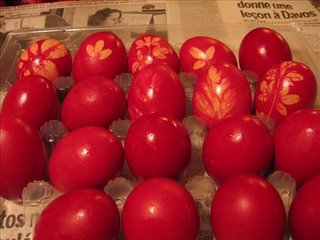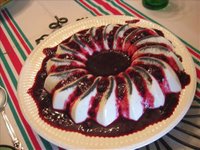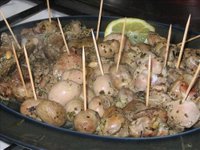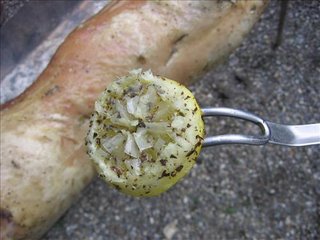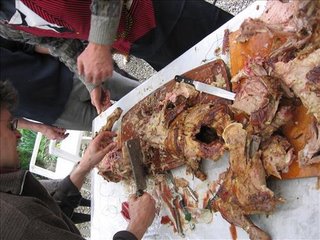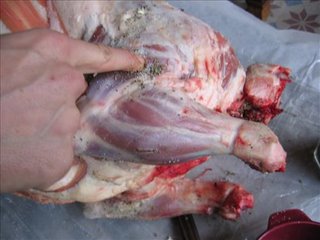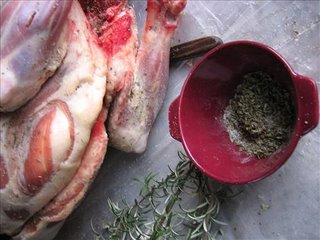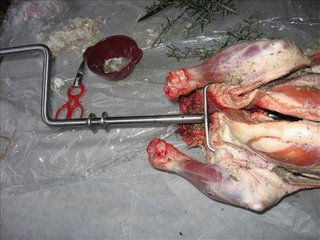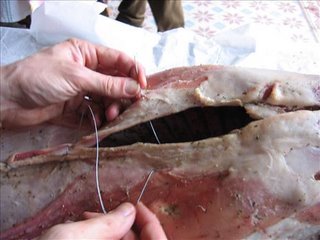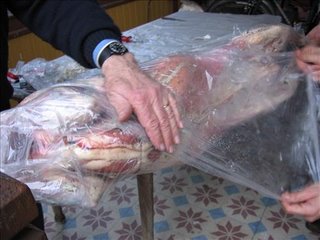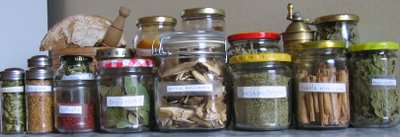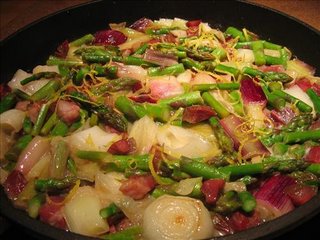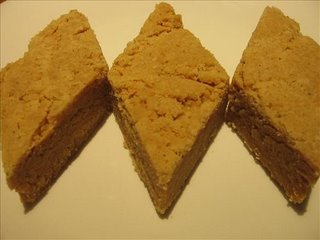
CHAPTER 1 INTRODUCTION
Actually if you compare this sweet, sweet, crumbly Indian treat to the Indian Milk Fudge I made earlier, the sore back homonym is not appropriate at all**. Mysore Pak is rather quick to produce, more like 15 minutes of cooking rather than 1 hour and 10 minutes. So that’s not so bad, right? This dish does, however require a good deal of know-how both of what the final product should be like (I didn’t know the first time) and about the physics of candy-making. The texture is a little tenderer and denser than a Scottish shortbread. This recipe is quick to make, but picky. They say cooking is an art and baking is a science. This dish doesn't go in the oven but sure as death and taxes, it's science. But, if you have 2 good medium-sized sauce pans (not non-stick), a functioning candy thermometer, a silicone spatula and a heavy-duty sweet tooth, I suggest making this lovely dessert/snack.
**By the way, is there anyone out there (Lotus?) who knows how to pronounce this correctly? I’m thinking “Mysore Pak” may not actually sound like “my sore back”. Ideas?
CHAPTER 2 THE STORY
I failed miserably attempting to replicate 2 other bloggers’ recipes for this dessert (
Mahanandi’s for "Mysore Pak" and
Rani and Raja’s for "Besan Ladoo", same ingredients, different quantities) and have found a happy middle ground. The latter had me frying 3 cups of chick pea flour with a pound of ghee for 5 minutes, then cooling it and pouring it into a very large mortar, then pestling in natural brown sugar and cardamom. I actually have a large mortar and pestle (though not like in Rani & Raja's photo!) I had no idea what the consistency was supposed to be like in the end. When was I allowed to stop pounding? A very messy kitchen, frustrated chef and a bunch of formless moosh later (tasty, though; I mean, I ate it and all)…
I went to Mahanandi where the chef and the commentors were very specific (but not very clear) as to how long to cook the mixtures and what the final product’s texture should be like. The chef had me cooking sugar and water until it reached the “one string consistency” (?!) I assumed the
“thread stage” (230F-235F, or when you drop a bit of the hot sugar syrup into a glass of cold water and it drops to the bottom creating a single thread that will not ball up) Only problem is that it is impossible to achieve the well described desired result by following her directions. At least, that’s my story and I’m sticking to it! (Actually, Indira of Mahanandi is lauded for her step-by-step clarity. I agree totally with the usefulness of the step-by-step part and her photos, clarity though, not so much.)
I fiddled with Mahanandi’s methodology a bit. I also created a middle ground between Rani & Raja's and Mahanandi's ingredient ratios (Indira, 2 measly cardamom pods?) and came up with a happy, but more importantly workable, medium. If you really want to try this recipe, I suggest you read Mahanandi’s and Rani and Raja’s posts about it first to get a feel for what this is all about. Then, of course, follow MY recipe! ;) Here it is:
CHAPTER 3 THE RECIPE
2 cups sifted chick pea flour (also called Besan flour)
¼ tsp salt
250 grams (about 2 sticks) unsalted butter
¾ cup granulated sugar plus 1 tbsp
one scant ¼ cup water
1 tbsp whole cardamom pods (or any other powdered sweet spice you like. I’m planning to put cardamom and ground ginger in next time)
**THE DISCLAIMER, a.k.a. GHEE, WHAT’S THE POINT?
I believe in clarifying butter, i.e making Ghee (melting butter and separating the oily part from the white watery, and solid parts before using in a recipe) as RARELY as possible. I used regular butter here, folks! From the fridge to the pan, just like that and I think the results were just fine. If you plan to deep fry something Indian or otherwise use really high temperatures where the butter solids would burn and make everything taste acrid, Ghee is your product of choice, but not here! Thank God!
BACK TO THE RECIPE
Lightly crush and peel the cardamom pods and extract the seeds. Put them in a spice grinder or small mortar and pestle along with the 1 tbsp sugar and grind to a fine powder. Reserve.
**NOTE: In this recipe, you will be cooking two things simultaneously. Not to worry, though. One, the sugar syrup requires no fiddling at all, no stirring, just checking the temperature. The other, the flour and butter, you watch and stir about every 30 seconds.
Melt the butter over medium heat in a medium saucepan and simultaneously in another saucepan, cook the sugar and water over medium-high heat.
Music to melt butter and sugar by: the soft, calming voice of Tracey Thorn in Everything But the Girl "Each and Every One" Tracey can keep your head cool as you're playing the mad scientist in the kitchen. Keep the candy thermometer in the sugar, swirl the pan periodically until all the sugar granules melt. In the other pan, as soon as the butter is totally melted, add the chick pea flour and combine with a wire whisk. Stir frequently but not constantly. Allow the paste at the bottom of the pan to darken to medium brown (the paste is generally light brown), then scrape sides and bottom of the pan thoroughly and let the bottom darken again, and mix again. This is approximately a once-every-30-seconds kind of process. The browning of the paste lets off a wonderfully nutty aroma while you're cooking and a complexity of flavor in the final product. Stir flour and butter while the temperature of the sugar rises. No need to ever stir the sugar at all. Once it reaches 225F, lower the flame to medium low, and let the sugar temperature continue to rise slowly. Mix the flour and butter again. Once the sugar temperature is 240F, add the cardamom/sugar powder into the flour/butter mixture and combine. Let the sugar slowly heat up to 245F. That is the “soft ball” stage, and the right time to mix all the ingredients together. Now, take a silicone spatula (does a great job scraping and won't melt) and scrape all of the flour/butter/cardamom mixture into the sugar. Stir, scraping the sides of the pan with the spatula and incorporating everything for about 30 seconds. The texture will be porous, like molten lava or a melty pumice stone. As soon as everything is combined, dump it all into a greased dish, smooth out the top and cut into diamond shapes before it cools and hardens. You have a good 2 minutes to start cutting the diamond shapes before the Mysore Pak gets hard and crumbly.
**What to do if you have no candy thermometer: If you don’t have a candy thermometer, you can take a bit of the sugar out with a spoon and drop it into a glass of cold water. When it forms a soft, stretchable ball, you have the right consistency. If it's more melty than that, keep cooking, if it is a hard, non-squooshable ball, just decide to drop this whole Mysore Pak thing and make caramel instead. ;)
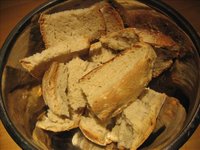
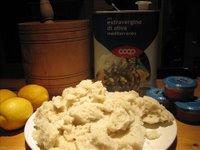
 This time, though we used "uova di lumpo", which turned out nicely, if a little too pink for my taste. This is an old-school recipe. Most Greeks who make their own Taramasalata these days use a food processor. Gabriel believes that the mortar and pestle way gives a better texture, so we do it the traditional way. He's also good at making mayonnaise from scratch which you should be if you want to make this by hand.
This time, though we used "uova di lumpo", which turned out nicely, if a little too pink for my taste. This is an old-school recipe. Most Greeks who make their own Taramasalata these days use a food processor. Gabriel believes that the mortar and pestle way gives a better texture, so we do it the traditional way. He's also good at making mayonnaise from scratch which you should be if you want to make this by hand.  Pound and mix the bread and tarama together with the pestle to form a uniform paste. Music to pound and mix tarama by: Alt-accordion rockers, They Might Be Giants' "Istanbul (Not Constantinople)". Try to keep you mind off the pounding violence between Turkey and Greece represented by the song and focus on the mixing of these cultures that exists despite so much nationalism. Slowly add olive oil in a thin stream (about 1 tbsp at a time) while stirring and grinding with the pestle. Stir vigorously to incorporate, then add another tablespoon. Continue like this until you have added ½ cup of oil and the mixture is rather liquid. Now add 1 tablespoon of lemon juice and stir to incorporate. Add another tablespoon and incorporate again. Alternate between adding oil and adding lemon juice until you have a thick, mayonnaise-like consistency, and the taste is a balance between the flavors of lemon, seafood and salt.
Pound and mix the bread and tarama together with the pestle to form a uniform paste. Music to pound and mix tarama by: Alt-accordion rockers, They Might Be Giants' "Istanbul (Not Constantinople)". Try to keep you mind off the pounding violence between Turkey and Greece represented by the song and focus on the mixing of these cultures that exists despite so much nationalism. Slowly add olive oil in a thin stream (about 1 tbsp at a time) while stirring and grinding with the pestle. Stir vigorously to incorporate, then add another tablespoon. Continue like this until you have added ½ cup of oil and the mixture is rather liquid. Now add 1 tablespoon of lemon juice and stir to incorporate. Add another tablespoon and incorporate again. Alternate between adding oil and adding lemon juice until you have a thick, mayonnaise-like consistency, and the taste is a balance between the flavors of lemon, seafood and salt.